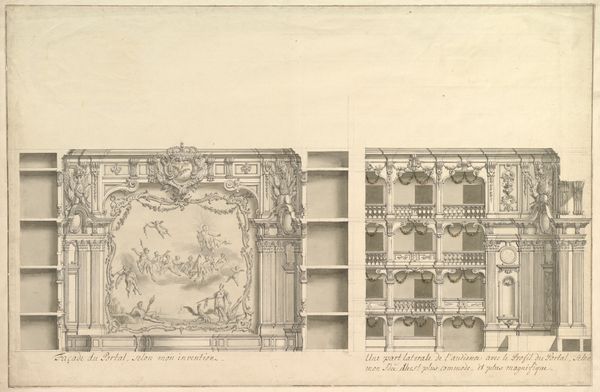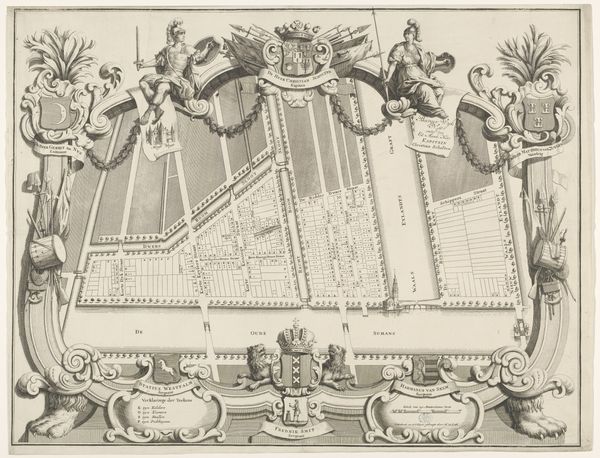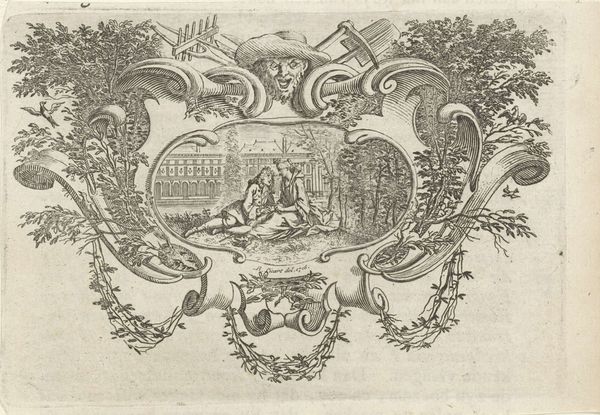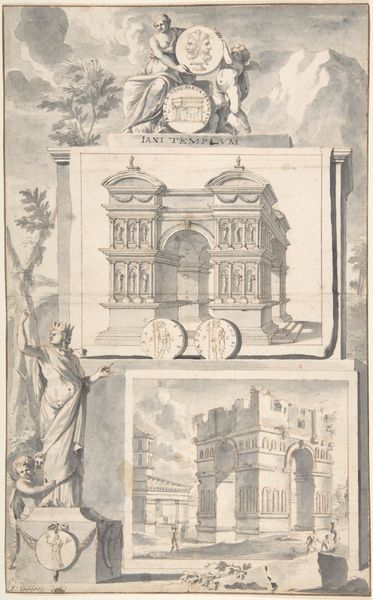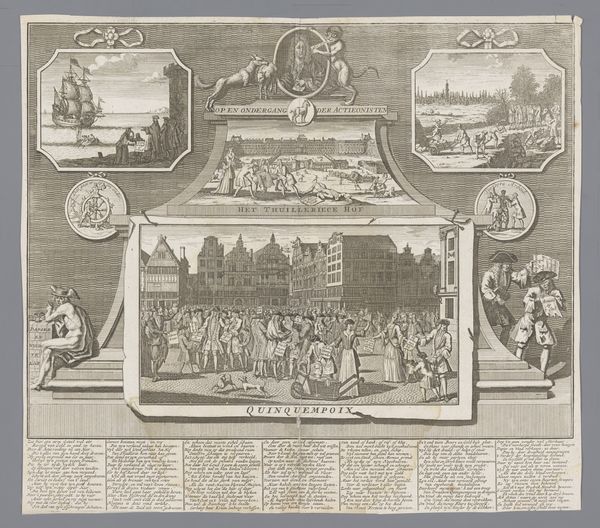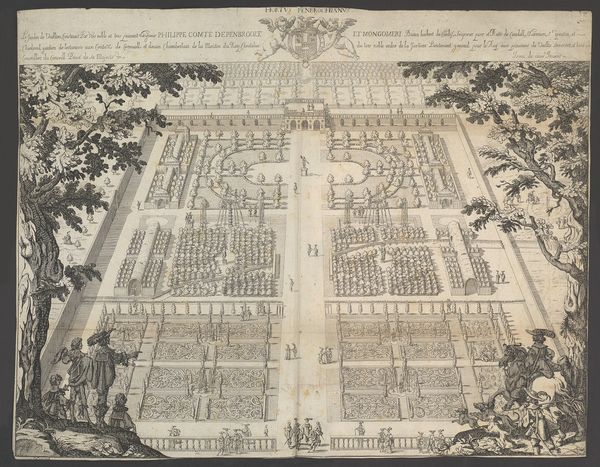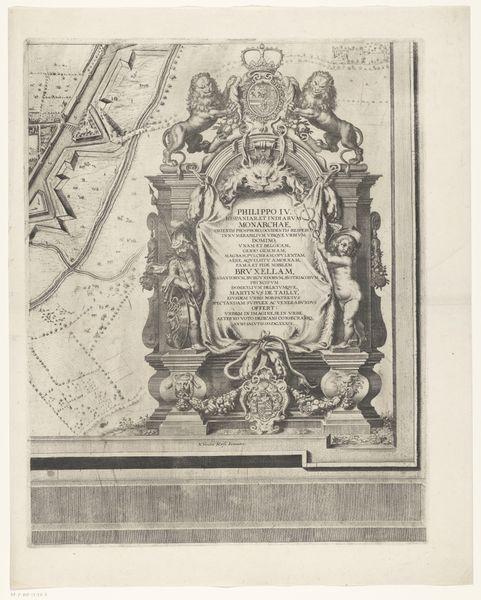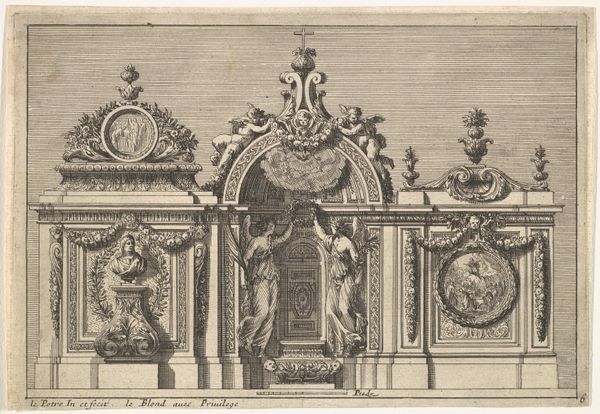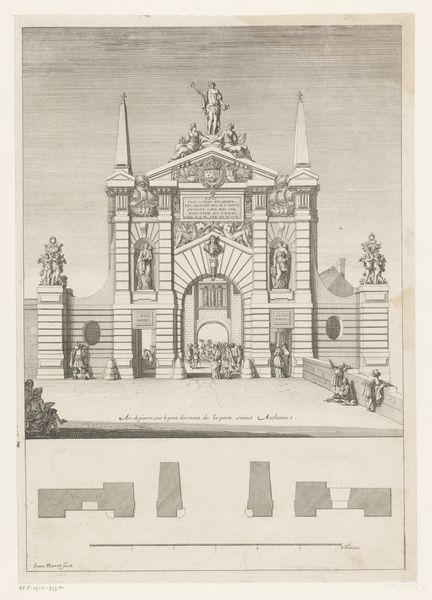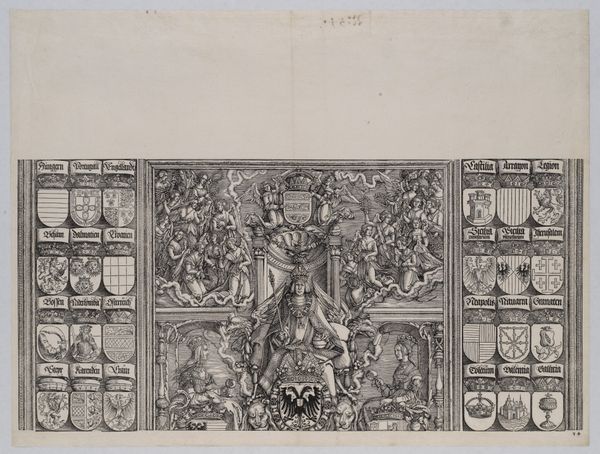
Plattegrond van en gezicht op het Nieuwezijds Huiszittenhuis, te Amsterdam 1650 - 1750
0:00
0:00
drawing, print, ink, engraving, architecture
#
drawing
#
baroque
#
dutch-golden-age
# print
#
pen sketch
#
ink
#
pen work
#
cityscape
#
engraving
#
architecture
Dimensions: height 612 mm, width 790 mm
Copyright: Rijks Museum: Open Domain
Editor: This print, dating from around 1650 to 1750, is entitled "Plattegrond van en gezicht op het Nieuwezijds Huiszittenhuis, te Amsterdam," and is credited to an anonymous artist. It seems to be an architectural rendering, crafted with ink and engraving. What stands out to me is how it blends a detailed, almost scientific layout with these ornate, baroque decorative elements. What strikes you about it? Curator: This work is fascinating in its demonstration of labor and consumption in Dutch Golden Age society. Note how the architectural plans, clearly essential for the building's construction and management, are given the same visual weight as the decorative cartouches and cherubic figures. Consider the division of labor: skilled engravers translated the architect's vision into a reproducible image, which then circulated among various stakeholders. Editor: That's an interesting perspective! I hadn't really considered the printmaking as a kind of labor in itself. What do you mean by stakeholders? Curator: Well, who would need this image? Certainly, the building's administrators, perhaps even potential donors. The print served not just as a record but also as a form of advertising, showcasing the institution's order and beneficence. Notice the stark contrast between the idealized rendering and the realities of poverty and social control housed within those walls. Editor: So, you're saying the print participates in a kind of…whitewashing of the building's true purpose? Curator: Precisely! It's a carefully constructed image intended to project a specific narrative. By examining the materials and methods used in its creation, we can uncover the social and economic forces at play in 17th and 18th century Amsterdam. What are your thoughts on it now? Editor: It makes me think about how we use images of buildings even today—always selling an idea. Thanks for sharing your insights! Curator: It's been a pleasure. Looking closely at process reveals so much about intent and impact.
Comments
No comments
Be the first to comment and join the conversation on the ultimate creative platform.
